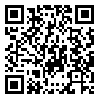Volume 6, Issue 1 (Spring & Summer 2020)
KJES 2020, 6(1): 151-168 |
Back to browse issues page
Download citation:
BibTeX | RIS | EndNote | Medlars | ProCite | Reference Manager | RefWorks
Send citation to:



BibTeX | RIS | EndNote | Medlars | ProCite | Reference Manager | RefWorks
Send citation to:
Rahmani N, Ranjbar H, Nezamabadi-pour H. Combining and Fusion of Multispectral and RADAR Data for Better Identification of Geological Features. KJES 2020; 6 (1) :151-168
URL: http://gnf.khu.ac.ir/article-1-2735-en.html
URL: http://gnf.khu.ac.ir/article-1-2735-en.html
1- Shahid Bahonar University of Kerman
2- Shahid Bahonar University of Kerman ,hojjatranjbar@gmail.com
2- Shahid Bahonar University of Kerman ,
Abstract: (2568 Views)
Remote sensing techniques allow scientists to study many parameters and features of the Earth’s surface such as geologic units, hydrothermal alterations, landslide, geologic structures, etc. It is possible to study every geologic parameter using single or multi dataset. Spectral features of the Earth’s surface are mainly used to investigate rock units, while rock textures are important parameters which are investigated using RADAR Images. In this paper it was tried to find out a way to improve geologic mapping based on multi-spectral and RADAR data fusion. A part of Kerman Copper Belt (KCB) was selected to evaluate the efficiency of ASTER, ETM+ and ALOS data fusion using two methods (layer stacking and PCA and IHS transform). Two polarized ALOS images were integrated to a new layer (with more information) using resultant vector method and injected to multi-spectral dataset. Results of both methods confirmed the ability of multi-spectral and RADAR data fusion to improve the detection of faults, dykes, hydrothermal alterations and geologic units discrimination in comparison with the multi-spectral data alone.
Subject:
Remote sensing and GIS
Received: 2020/02/23 | Accepted: 2020/08/25 | Published: 2020/08/31
Received: 2020/02/23 | Accepted: 2020/08/25 | Published: 2020/08/31
Send email to the article author
| Rights and permissions | |
 |
This work is licensed under a Creative Commons Attribution-NonCommercial 4.0 International License. |






